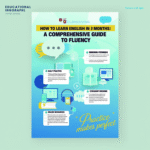International students are a vital part of the global higher education landscape, contributing diverse perspectives, cultural richness, and economic benefits to host countries. However, immigration policies significantly shape their experiences, influencing everything from visa acquisition to post-graduation opportunities. We explore the multifaceted ways immigration policies impact international students, delving into visa regulations, work opportunities, financial considerations, and long-term prospects across major study destinations like the United States, Canada, Australia, the United Kingdom, and the European Union. This comprehensive analysis provides insights into challenges, opportunities, and strategies for navigating the complex interplay of education and immigration.
- The Role of Immigration Policies in Shaping International Education
- Financial Implications of Immigration Policies
- Post-Graduation Pathways: Opportunities and Challenges
- United States: Limited Long-Term Options
- Canada: A Model for Retention
- United Kingdom: Balancing Attraction and Restriction
- Australia: Skill-Based Pathways
- European Union: Diverse Opportunities
- Socioeconomic and Cultural Impacts
- Strategies for Navigating Immigration Policies
- Case Studies: Real-World Impacts
- Case Study 1: An Indian Student in the U.S.
- Case Study 2: A Nigerian Student in Canada
- Case Study 3: A Chinese Student in the U.K.
- Global Trends in Immigration Policies for International Students
- Recommendations for Policymakers
- Conclusion and Suggestions
- Frequently Asked Questions (FAQs)
The Role of Immigration Policies in Shaping International Education
Immigration policies serve as the framework governing the entry, stay, and post-study pathways for international students. These policies determine who can study abroad, for how long, and under what conditions. They are shaped by a country’s economic needs, political climate, and educational priorities. For international students, these regulations are not mere formalities—they are pivotal in deciding whether pursuing education abroad is feasible.
In recent years, global shifts in political landscapes have led to evolving immigration frameworks. For instance, tightened policies in some nations aim to prioritize local labor markets, while others have loosened restrictions to attract global talent. These changes directly affect international students, who often face uncertainty about their ability to remain in a country after completing their studies. We examine how these policies function across key study destinations and their implications for students.
Visa Regulations: The Gateway to International Education
Visa policies are the first hurdle for international students. Securing a student visa involves navigating complex application processes, financial requirements, and documentation. Each country has unique regulations, but common elements include proof of admission, financial stability, and intent to return home post-study.
United States: The F-1 Visa Landscape
In the United States, the F-1 visa is the primary pathway for international students. Obtaining this visa requires proof of acceptance into a Student and Exchange Visitor Program (SEVP)-approved institution, sufficient funds to cover tuition and living expenses, and strong ties to the home country to demonstrate non-immigrant intent. The process is rigorous, with consular interviews often determining approval.
Recent policy shifts have added layers of complexity. For example, during certain periods, heightened scrutiny of visa applications from specific countries has led to delays or denials, impacting students’ ability to begin their programs on time. Additionally, the Optional Practical Training (OPT) program, which allows F-1 students to work for up to 12 months (or 36 months for STEM fields) post-graduation, is subject to policy fluctuations. Changes in OPT regulations can affect students’ career planning, as the opportunity to gain work experience in the U.S. is a significant draw.
Canada: Streamlined Pathways with Post-Graduation Benefits
Canada’s Study Permit system is known for its relative efficiency. Applicants must provide a letter of acceptance from a Designated Learning Institution (DLI), proof of funds, and a clean criminal record. Canada’s immigration policies are notably student-friendly, offering the Post-Graduation Work Permit (PGWP), which allows students to work for up to three years after completing their studies. This pathway is a critical factor in Canada’s appeal, as it provides a clear route to permanent residency through programs like the Canadian Experience Class (CEC).
However, recent policy adjustments have introduced caps on study permits in certain provinces to manage housing and resource pressures. These changes have sparked concerns about accessibility, particularly for students from high-demand countries like India and China. We will explore how such measures affect application success rates and student planning.
United Kingdom: Post-Brexit Visa Reforms
The United Kingdom’s Student Visa (formerly Tier 4) requires applicants to secure a Confirmation of Acceptance for Studies (CAS) from a licensed sponsor, demonstrate English proficiency, and prove financial stability. Post-Brexit, the U.K. introduced the Graduate Route, allowing international students to stay and work for two years (three for PhD graduates) after completing their studies. This policy has bolstered the U.K.’s attractiveness, but stringent requirements, such as mandatory tuberculosis testing for some nationalities and high visa fees, pose challenges.
Brexit also altered the landscape for EU students, who now face the same visa requirements as non-EU students, significantly increasing costs. We analyze how these changes have reshaped the U.K.’s international student demographics and their long-term implications.
Australia: Balancing Opportunity and Restriction
Australia’s Student Visa (Subclass 500) allows students to study for up to five years, with provisions for part-time work during studies. The country’s immigration policies emphasize attracting skilled graduates, offering pathways like the Temporary Graduate Visa (Subclass 485) for post-study work. However, recent increases in visa fees and stricter financial requirements have raised concerns about affordability.
Australia’s policies also tie visa conditions to course types. For instance, vocational programs may have different work rights compared to university degrees. We discuss how these nuances influence students’ choices and experiences.
European Union: Diverse Policies Across Member States
The EU presents a varied landscape due to its decentralized immigration framework. Countries like Germany and France offer student visas with low or no tuition fees for international students, but visa processes differ. Germany’s visa requires proof of €11,208 in a blocked account for living expenses, while France emphasizes academic merit and language proficiency. Post-study work options vary, with Germany offering an 18-month job search visa and France providing a one-year Autorisation Provisoire de Séjour (APS).
The EU’s Blue Card scheme facilitates long-term residency for skilled graduates, but eligibility criteria, such as minimum salary thresholds, can be restrictive. We explore how these policies shape the EU’s appeal for international students.
Financial Implications of Immigration Policies
Immigration policies directly influence the financial burden on international students. Visa fees, proof of funds requirements, and restrictions on work opportunities create a complex financial landscape.
Visa and Application Costs
Visa fees vary widely. In the U.S., the F-1 visa costs $185, plus a $350 SEVIS fee. The U.K.’s Student Visa fee is £490, with an additional Immigration Health Surcharge of £776 per year. Australia’s Subclass 500 visa costs AUD 710, while Canada’s Study Permit is CAD 150. These upfront costs, combined with application processing delays, can strain students’ budgets before they even arrive.
Proof of Funds Requirements
Many countries require proof of sufficient funds to cover tuition and living expenses. For example, Canada mandates CAD 20,635 per year (outside Quebec), while Germany’s blocked account requirement ensures students have €11,208 annually. These requirements disproportionately affect students from low-income backgrounds, limiting access to global education.
Work Restrictions and Opportunities
Work rights during studies vary. In the U.S., F-1 students can work on-campus for up to 20 hours per week but face restrictions on off-campus employment. Canada and Australia allow 20 hours of work per week during term time, with unlimited hours during breaks. The U.K. permits 20 hours for degree-level students but only 10 for sub-degree programs. These restrictions impact students’ ability to offset living costs, particularly in high-cost cities like London or Sydney.
Post-graduation work options are equally critical. Canada’s PGWP and the U.K.’s Graduate Route provide clear pathways, while the U.S.’s OPT is time-limited. Australia’s Temporary Graduate Visa offers flexibility but is tied to specific occupations. In the EU, countries like Germany and the Netherlands provide job search visas, but bureaucratic hurdles can complicate transitions to employment.
Post-Graduation Pathways: Opportunities and Challenges
Immigration policies significantly influence international students’ ability to remain in a host country after graduation. These pathways are critical for students seeking to build careers abroad.
United States: Limited Long-Term Options
The U.S. offers limited post-graduation pathways. The OPT program provides temporary work opportunities, but transitioning to an H-1B visa is challenging due to annual caps and lottery systems. Students from countries with long green card backlogs, such as India, face waits of decades. This uncertainty drives some students to explore alternative destinations.
Canada: A Model for Retention
Canada’s immigration policies are designed to retain talent. The PGWP allows graduates to gain Canadian work experience, which is a key eligibility criterion for permanent residency through the Express Entry system. In 2023, over 50% of international students who completed their studies applied for permanent residency, highlighting Canada’s appeal.
United Kingdom: Balancing Attraction and Restriction
The U.K.’s Graduate Route is a significant draw, but its two-year duration limits long-term prospects. Graduates must secure a Skilled Worker Visa, which requires employer sponsorship and a minimum salary threshold. This can be challenging in competitive job markets, particularly for humanities graduates.
Australia: Skill-Based Pathways
Australia’s immigration policies prioritize skills in demand. The Temporary Graduate Visa allows graduates to work for 18 months to four years, depending on their qualification. The Skilled Migration Program offers permanent residency for those meeting occupation and points-based criteria, but changes in priority occupations can create uncertainty.
European Union: Diverse Opportunities
The EU’s post-graduation pathways vary. Germany’s 18-month job search visa is generous, but language barriers can limit job prospects. France’s APS allows one year to find employment, but strict labor market tests apply. The EU Blue Card offers a long-term option, but its high salary requirements exclude many entry-level roles.
Socioeconomic and Cultural Impacts
Immigration policies also shape the socioeconomic and cultural experiences of international students. Visa delays, work restrictions, and post-graduation uncertainties can create stress and feelings of exclusion.
Mental Health and Well-Being
The uncertainty surrounding visa renewals, work permits, and post-graduation pathways can take a toll on students’ mental health. Studies show that international students face higher rates of anxiety and depression due to immigration-related stressors. Universities must provide robust support systems, including counseling and immigration advising, to address these challenges.
Cultural Integration
Policies that restrict work or social engagement can hinder cultural integration. For example, U.S. students on F-1 visas often report feeling isolated due to limited off-campus work opportunities. In contrast, Canada’s flexible work policies enable students to engage with local communities, fostering a sense of belonging.
Economic Contributions
International students contribute significantly to host economies. In the U.S., they added $40 billion to the economy in 2022, supporting over 400,000 jobs. In Canada, their contribution exceeds CAD 22 billion annually. Policies that facilitate their stay, such as Canada’s PGWP, maximize these benefits, while restrictive policies, like those in the U.S., may deter future students.
Strategies for Navigating Immigration Policies
International students can adopt several strategies to navigate complex immigration policies effectively:
-
Research Early: Understand visa requirements, work rights, and post-graduation pathways before applying to programs.
-
Financial Planning: Budget for visa fees, proof of funds, and living expenses to avoid financial strain.
-
Seek Expert Advice: Consult university immigration advisors or legal professionals to ensure compliance with regulations.
-
Leverage University Resources: Many institutions offer workshops, legal clinics, and career services tailored to international students.
-
Build a Professional Network: Engage in internships, networking events, and industry connections to enhance post-graduation prospects.
-
Stay Informed: Monitor policy changes through official government websites or reputable news sources to anticipate shifts.
Case Studies: Real-World Impacts
Case Study 1: An Indian Student in the U.S.
Amit, a computer science graduate from India, secured an F-1 visa to study at a U.S. university. He excelled academically and secured an OPT position at a tech firm. However, the H-1B visa lottery system and long green card backlogs forced him to return to India after his OPT expired. This case highlights the challenges of transitioning from student to professional status in the U.S.
Case Study 2: A Nigerian Student in Canada
Chidinma, a Nigerian student, pursued a master’s degree in Canada. The PGWP allowed her to work in Toronto for three years, during which she gained enough points to apply for permanent residency through the CEC. Canada’s clear pathways enabled her to build a successful career, illustrating the benefits of student-friendly policies.
Case Study 3: A Chinese Student in the U.K.
Li, a Chinese student, completed a business degree in the U.K. The Graduate Route allowed her to work for two years, but she struggled to secure a Skilled Worker Visa due to high salary requirements. She eventually returned to China, underscoring the limitations of short-term post-study work options.
Global Trends in Immigration Policies for International Students
Global trends in immigration policies reflect competing priorities: attracting talent while managing domestic concerns. Countries like Canada and Australia have leaned into student-friendly policies to boost their economies and address labor shortages. In contrast, the U.S. and U.K. have adopted more cautious approaches, balancing security and economic needs.
Emerging destinations, such as Germany and the Netherlands, are gaining traction by offering low-cost education and post-study work options. Meanwhile, countries like Singapore and New Zealand are introducing targeted policies to attract STEM students, reflecting global demand for tech talent.
Recommendations for Policymakers
To maximize the benefits of international students, policymakers should consider the following:
-
Simplify Visa Processes: Streamline applications and reduce fees to enhance accessibility.
-
Expand Work Opportunities: Increase work hours during studies and extend post-graduation work permits.
-
Clarify Pathways to Residency: Provide transparent routes to permanent residency for skilled graduates.
-
Support Integration: Fund programs that promote cultural and professional integration.
-
Monitor Economic Impacts: Regularly assess the contributions of international students to inform policy decisions.
Conclusion and Suggestions
Immigration policies profoundly shape the experiences of international students, from visa acquisition to post-graduation opportunities. While countries like Canada and Australia offer robust pathways, others, like the U.S., present challenges due to restrictive policies. By understanding these dynamics and adopting strategic approaches, students can navigate the complexities of global education. Policymakers, in turn, should prioritize student-friendly policies to harness the economic and cultural benefits of international students.
Suggestions for International Students
-
Start visa applications early to account for processing delays.
-
Explore scholarship and funding options to meet proof of funds requirements.
-
Engage with career services to build skills and networks for post-graduation opportunities.
-
Stay updated on policy changes through official channels.
-
Seek mental health support to manage immigration-related stress.
Frequently Asked Questions (FAQs)
-
What are the main types of student visas?
Student visas vary by country, such as the F-1 visa (U.S.), Study Permit (Canada), Student Visa (U.K.), and Subclass 500 (Australia). -
How do immigration policies affect visa approval rates?
Policies set criteria like financial proof and non-immigrant intent, influencing approval rates based on country of origin and political climate. -
Can international students work while studying?
Most countries allow part-time work (20 hours/week) during term time, with variations like unlimited hours in Canada and Australia during breaks. -
What is the U.S. Optional Practical Training (OPT)?
OPT allows F-1 students to work for 12 months (36 for STEM) post-graduation, but transitioning to an H-1B visa is competitive. -
How does Canada’s Post-Graduation Work Permit (PGWP) work?
The PGWP allows graduates to work for up to three years, supporting permanent residency applications through programs like Express Entry. -
What is the U.K.’s Graduate Route?
The Graduate Route permits students to work for two years (three for PhD) post-study, but long-term visas require employer sponsorship. -
How do EU countries handle post-study work?
Countries like Germany offer 18-month job search visas, while France provides a one-year APS, with varying eligibility criteria. -
Why are visa fees a challenge for international students?
High fees, like the U.K.’s £490 plus health surcharge, strain budgets, especially for students from low-income countries. -
How do immigration policies impact mental health?
Visa uncertainties and work restrictions can increase anxiety and depression, necessitating robust university support systems. -
What is proof of funds, and why is it required?
Proof of funds ensures students can cover tuition and living costs, with requirements like CAD 20,635 in Canada or €11,208 in Germany. -
How do policies affect cultural integration?
Work restrictions can limit community engagement, while flexible policies, like Canada’s, foster integration through employment. -
What is the EU Blue Card?
The EU Blue Card is a work permit for skilled non-EU graduates, but high salary thresholds can limit accessibility. -
How do immigration policies influence study destination choices?
Policies offering work opportunities and residency pathways, like Canada’s, attract more students than restrictive systems. -
Can international students apply for permanent residency?
Yes, in countries like Canada and Australia, but pathways like the U.S.’s green card system are more restrictive. -
How can students stay informed about policy changes?
Monitor official government websites, consult university advisors, and follow reputable news sources for updates.




















